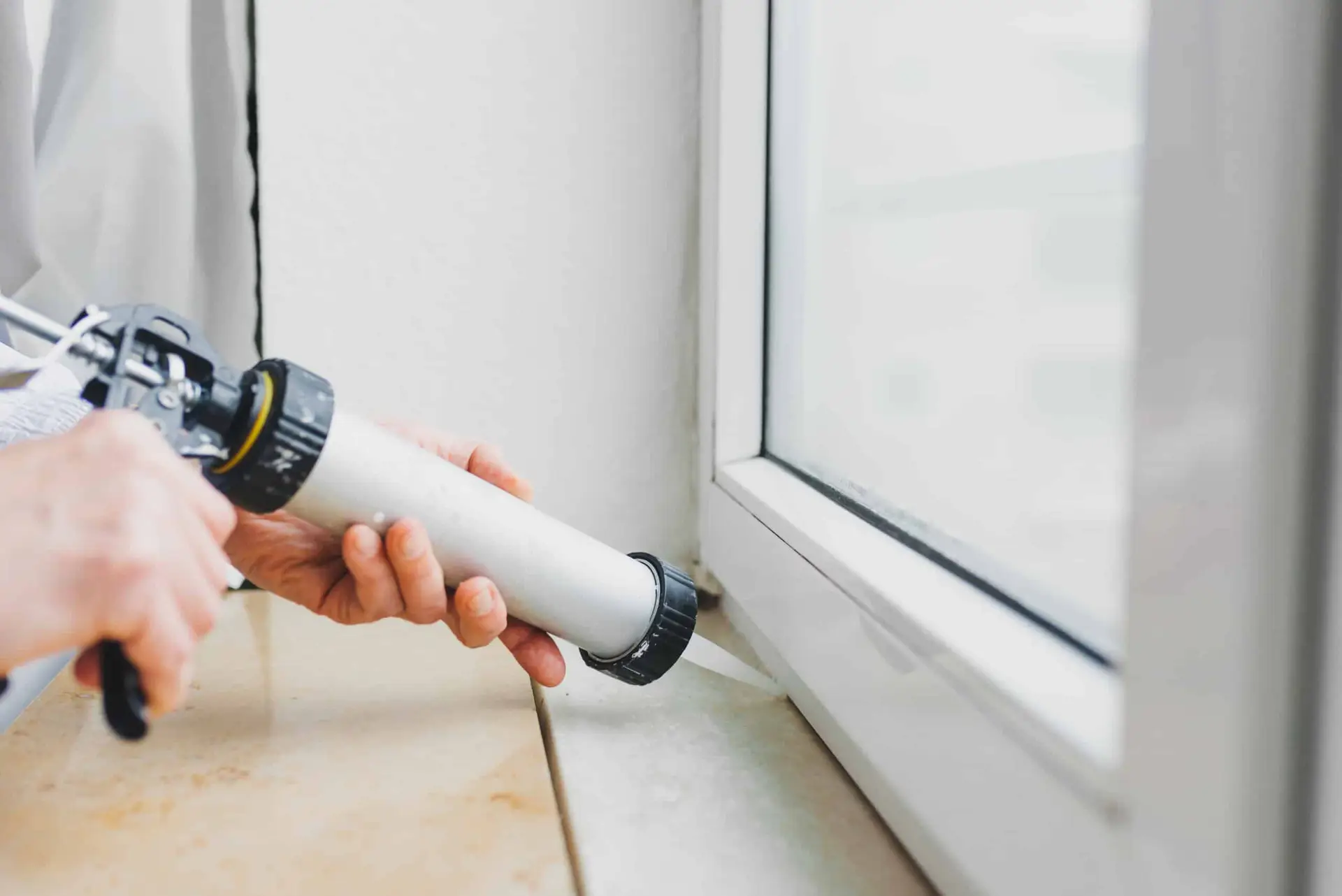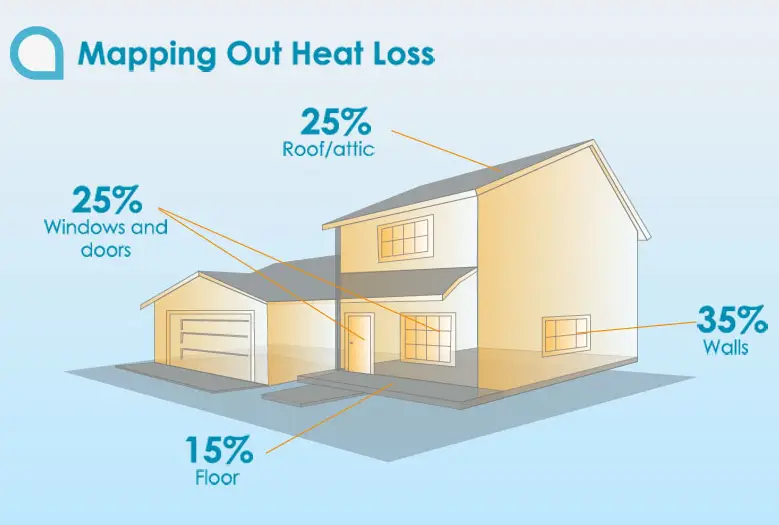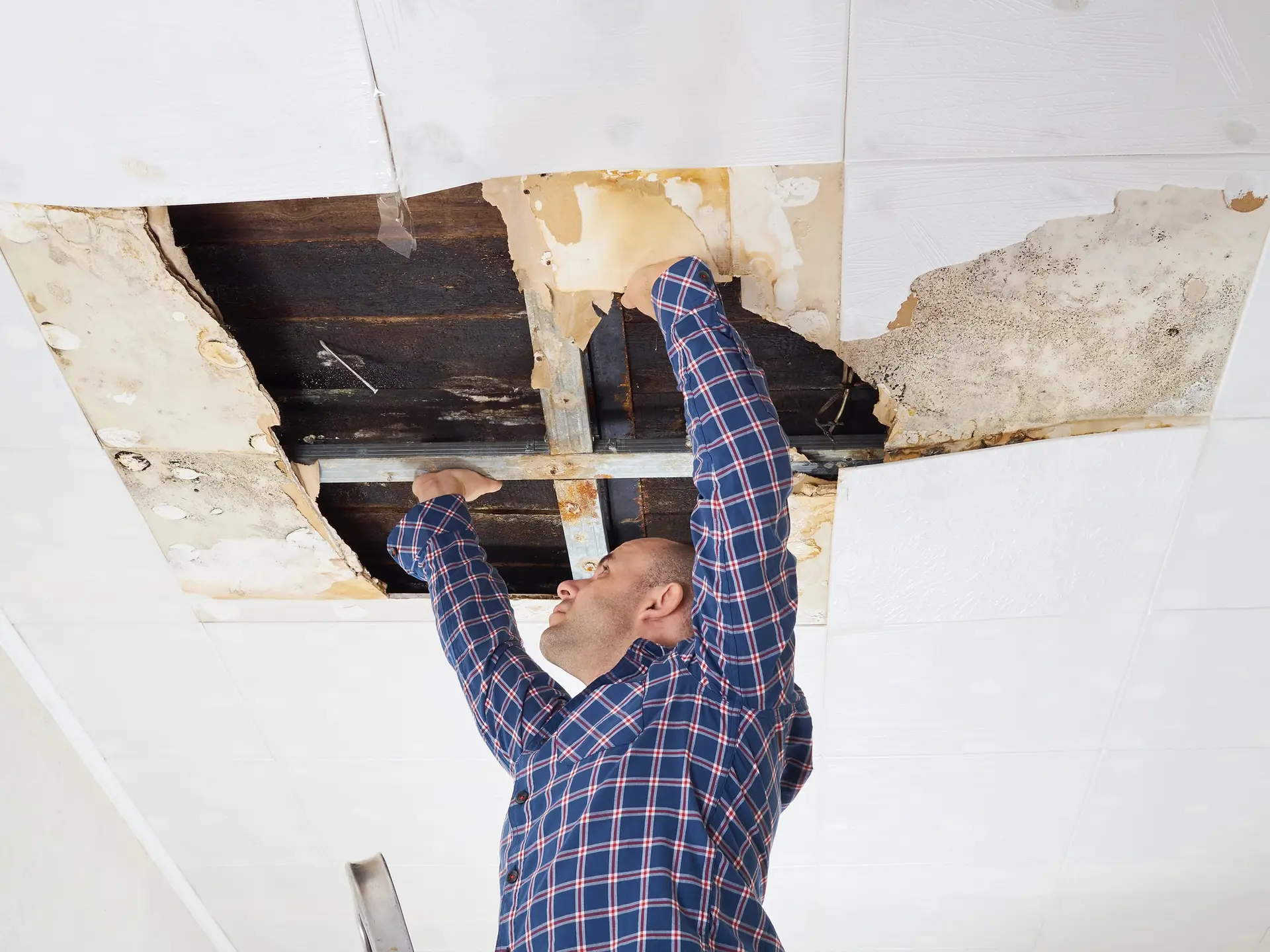No matter the season here in New England, it’s important to minimize your home’s energy loss as much as possible. Every homeowner knows that our region goes from sizzling summers to being slammed with months of relentless snow and cold temperatures. Now is the time to seal up all the gaps that can cause energy loss through every season!
What is your home’s building envelope and why is it important that it’s sealed?
When it comes to preparing your home for winter, your home’s energy efficiency relies on two things – keeping energy flowing where it should be AND stopping energy from leaking. The part of your home that’s responsible for keeping energy where it should be is your home’s building envelope–your home’s defense against weather and energy loss. Your roof, walls, siding, insulation, windows, entry doors, and foundation are all a part of your home’s building envelope.
A building envelope has three main functions…
- To Support your home by resisting and transferring mechanical loads
- To Control the flow of matter and energy in your home
- To Finish your home – the look and feel that appeals to your desires and tastes
When it comes to preparing your home for winter, we’re going to focus on function #2 – controlling the flow of matter and energy in your home.
This means you need to look at how well your roof, walls, siding, insulation, windows, entry doors, and foundation are insulated and sealed to ensure your home is efficiently keeping water or any kind of
Now that we’ve covered your home’s building envelope, run through this energy-saving checklist to make sure your home’s building envelope is sealed and you’re prepared for winter!
1. Find & Caulk The Gaps

Did you know that some simple air sealing work can save you up to 10% on your energy bills? While it’s not as substantial as replacing your windows, caulking is certainly still worth the effort. But how do you properly caulk for energy gaps?
On a windy day, carefully hold a match next to your windows, doors, electrical boxes, plumbing fixtures, electrical outlets, ceiling fixtures, attic hatches, and other places where air could leak.
If the smoke stream travels horizontally, you have located an air leak that may need caulking, sealing or weatherstripping. Make sure your outlets and switch plates are insulated with foam gaskets.
Next, you’ll want to seal the gaps where plumbing, ducting, or electrical wiring comes through walls, floors, ceilings, and soffits over cabinets. Remember there are different kinds of caulk for different situations. Call us to learn about them if you have questions.
2. Check Your Insulation

An old roof can cause you to lose up to 25% of your home’s energy. Couple this problem with poor or no insulation, and you’ll find that your energy bills will skyrocket.
Look for dirty spots in your insulation and if the leaks are minimal, you can try sealing them with low-expansion spray foam and if significant, you may want to find a contractor to install home insulation. In addition, a roofing specialist can determine the health of your attic and roof and evaluate whether your home could be at risk for ice dams this winter.
Pro tip: The temperature of your attic should closely match the outdoor temperature, no matter the time of year!
3. Inspect Your Ceiling, Paint, and Carpet

Taking a look at the infographic above, you can see that 15% of your home’s energy can escape through the floor. What’s worse is that 35% of your home’s energy can escape through the walls!
Once again, look for dirty spots as they may indicate air leaks at interior wall/ceilings and wall/floor joists Inspect the caulking at these joints, if it’s cracked, or damaged, you should re-caulk to fortify your home’s building envelope seal.
Are you still using old storm windows to help insulate?
Unfortunately, storm windows are not that effective at providing extra insulation. Replacing old windows with energy-efficient, double-pane, low-emission windows is the key to saving energy and money!
4. Do You Have Drafty Windows, Doors, and Baseboards?
Look for visible gaps in your home’s building envelope. If you can SEE gaps around your windows and baseboards, you want to seal them. Make sure your door thresholds are sealed well to stop drafts. For gaps around your windows that are less than the width of a nickel, seal them with caulk.
If you think you have particularly drafty windows, read through our Winter Ready Windows page of the Winter-Ready Home Guide to determine if you need to do more than caulk.
5. Cover your kitchen exhaust fan
Drafts can blow through your kitchen exhaust fan. Cover it to stop air leaks when you’re not using it.
6. Check Your Dryer Vent and Exterior Faucets
If your dryer vent is blocked, your dryer could overheat (hello fire), which causes it to run less efficiently and use more energy. In addition, do not let your pipes freeze.
If your pipes freeze, the ice will expand and the pipes will burst. Start with the garden hoses and draining the water that remains in the faucets. If you have a shut-off valve, your job is easier than most.
7. Check Your Fireplace
Keep the fireplace flue damper tightly closed when not in use. Seal air leaks around fireplace chimneys, furnaces, and gas-fired water heater vents with fire-resistant materials such as sheet metal or sheetrock and furnace cement caulk.
8. Ensure Top Roof Performance with Proper Ventilation
We all knew this one was coming. To prevent ice dams you must make sure that you have the appropriate amount of attic insulation for your region, cleared soffits with efficient ventilation, and a roof that is well protected. If you had an issue with your roofing in the past, it would be best to have your roof inspected now.
Tip: It’s important that your roof has the proper amount of ice and water shield to ensure that any water that does get behind your shingles doesn’t penetrate through your roof.
9. Clean Gutters
Cleaning your gutters is a very small expense that can save you thousands. If your gutters are full of debris, water will back up against your home and you’ll risk damaging your roofing, siding, and wood trim, as well as some portions of the inside of your home.
Looking for even more information to prepare your home for winter?
Check out our Spring Promotion, and articles on Ice Dam Prevention, Window Preparation, and Door Preparation!
Check our Winter Home Improvement Resources to and find all of the information you need for any home improvement project.





